Exhibition
‘still bound to each other
the world is changing and we must too
we need to find each other
In a coalition’
- Diana Ferrus -
NEXXUS is a collaborative exploration between poets, visual artists, musicians, a composer and architect.
The creative platform draws its name from the participatory act of connection between the artists as well as the causal relationship between the artworks. Voice and sound reverberate in the visual, in turn translated through the medium of space, and echoed in human connection. The cross-fertilisation between creative practices, enables the binding of concepts, knowledges, languages into a new existence.
At a time of human collision with the earth, NEXXUS confronts the dominant narratives in which great divides emerged, between nature and culture, reason and unreason, subject and object, the traditional and the modern.
In the detail of the works and performances, differentiated rhythms of change become evident, in entangled temporalities of changing relations, shapes and qualities. Viewed through a curatorial lens of fragmentation, the interventions explore whether cultural fractures rooted in trauma can be reassembled into opportunities of hybrid re-imagination.
The NEXXUS exhibition is complemented by a public programme of performances and circle-conversations. This live exchange offers the opportunity to confront and co-create alternative realities, harnessing the power of multicultural connectivity, realising we are all one.









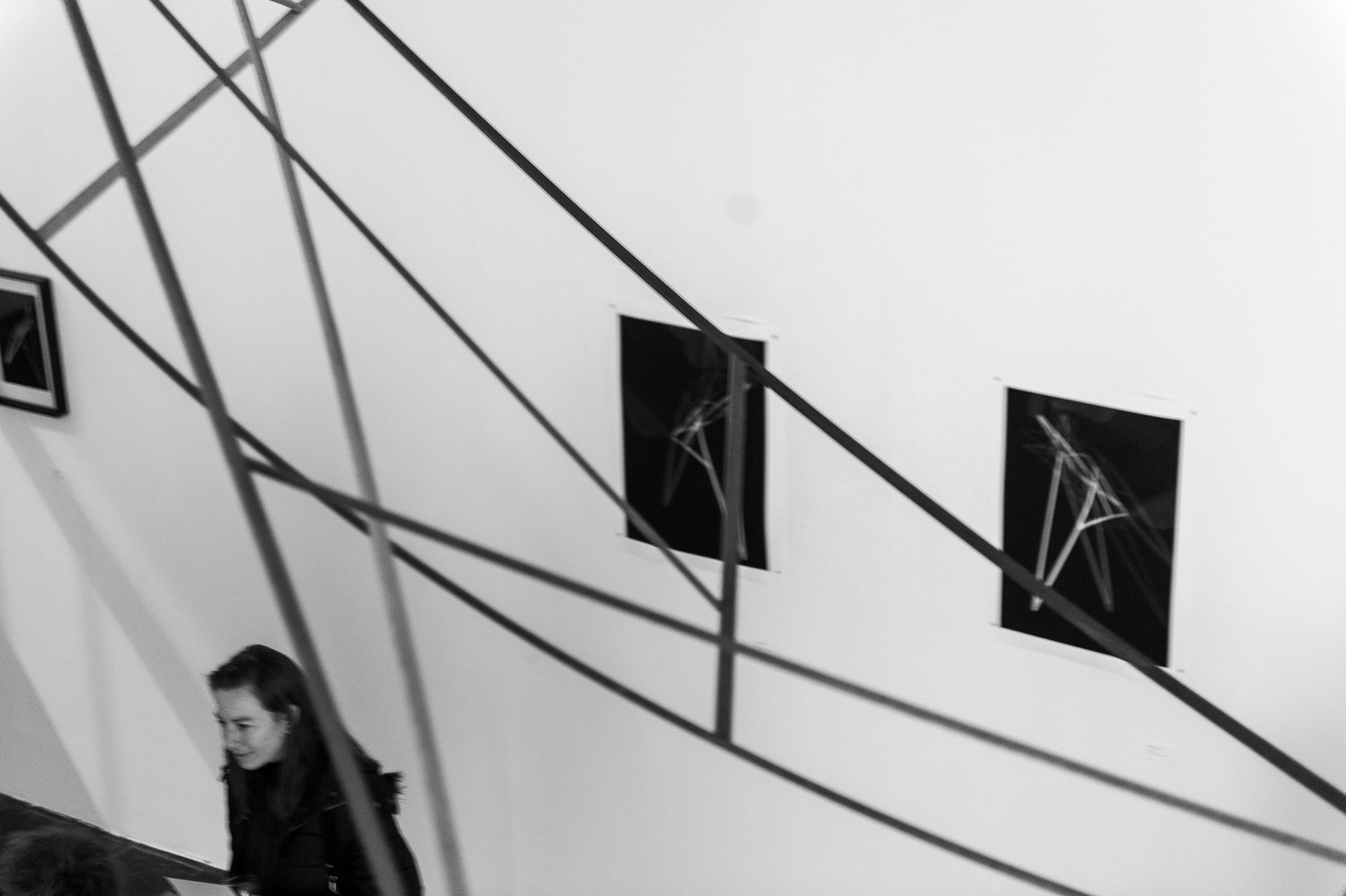



What shall I cry?
Franco Prinsloo and Sonya Rademeyer
medium: video12min 22 sec (2022)
"What shall I cry?" is a collaboration between composer Franco Prinsloo and visual artist Sonya Rademeyer.
The soundscape is a deconstruction, and eventual reconstruction, of phrases from Prinsloo’s 2021 choral composition, Vox Dicentis: Clama which was composed for the public performance Vuurbees | Fire Beast. The soundscape was created by utilising short phrases recorded live by Vox Chamber Choir, reassembled, stacked and looped to create a shimmering, dense and immersive ocean of sound.
The video piece explores notions of non-belonging within the South African landscape, using the ‘weed’ Echium plantagineum metaphorically. The poetic imagery in What shall I cry? belies the underlying messaging of severing from Land. What shall I cry? therefore questions notions of forceful separation and segregation to Land, imaging a restlessness and loneliness that points to the trauma and lived experience of the severing from Land.
"What shall I cry?" asks: who is doing the speaking around notions of belonging, and how can reflection through art contribute towards cultural healing?
video still from "What shall I cry?"
posthuman
Franco Prinsloo and Sonya Rademeyer
medium: video 3min 6 sec (2020)
"posthuman" is a joint work between composer/musician Franco Prinsloo and visual artist Sonya Rademeyer.
Created within the confines of the lockdown (2020) the work was created across distance. The composition ‘Pas de Deux’ hails from the album Sunnyside Suite which explores the concept of intersections as a place of flux where different roads both meet and part. "Pas de deux" from Sunnyside Suite is a work for voices and found sound, performed by Charlotte Botha.
The video echoes the idea of intersection at a metaphorical level., and speaks to notions of disconnection. Equally, the video points towards an escalating disconnection between humanity and the natural environment, questioning whether humanness - as it has been known to us - might currently be at a crossroad or intersection.
posthuman asks: what our choice as humans might be, and how can we find new ways of connection?
21 Days / #music_for_isolated_musicians
Franco Prinsloo and Sonya Rademeyer
medium: musical compositions and intuitive drawings (2020)
"21 Days / #music_for_isolated_musicians" is a collaborative experience between a composer and a visual artist.
The title draws its name from the initial 21 days of the COVID_19 Pandemic (2020), when social cohesion was forcibly fractured across the world. Seeking to find connection across confinement and boundaries, composer Franco Prinsloo sent out 21 musical scores to musicians across the globe. The 21 Solo’s were made available for any musician to play, record with their phones, and send back.
Visual artist Sonya Rademeyer re-interpreted these musical renderings into a series of intuitive drawings. During NEXXUS, this series will be completed where four of the ‘missing’ drawings will be created through a live-drawing performance happening on Friday 22 September 2023 at 18H30.
This project explores whether cultural disconnect or severing can be re-imagined as new connections.
For all images see here
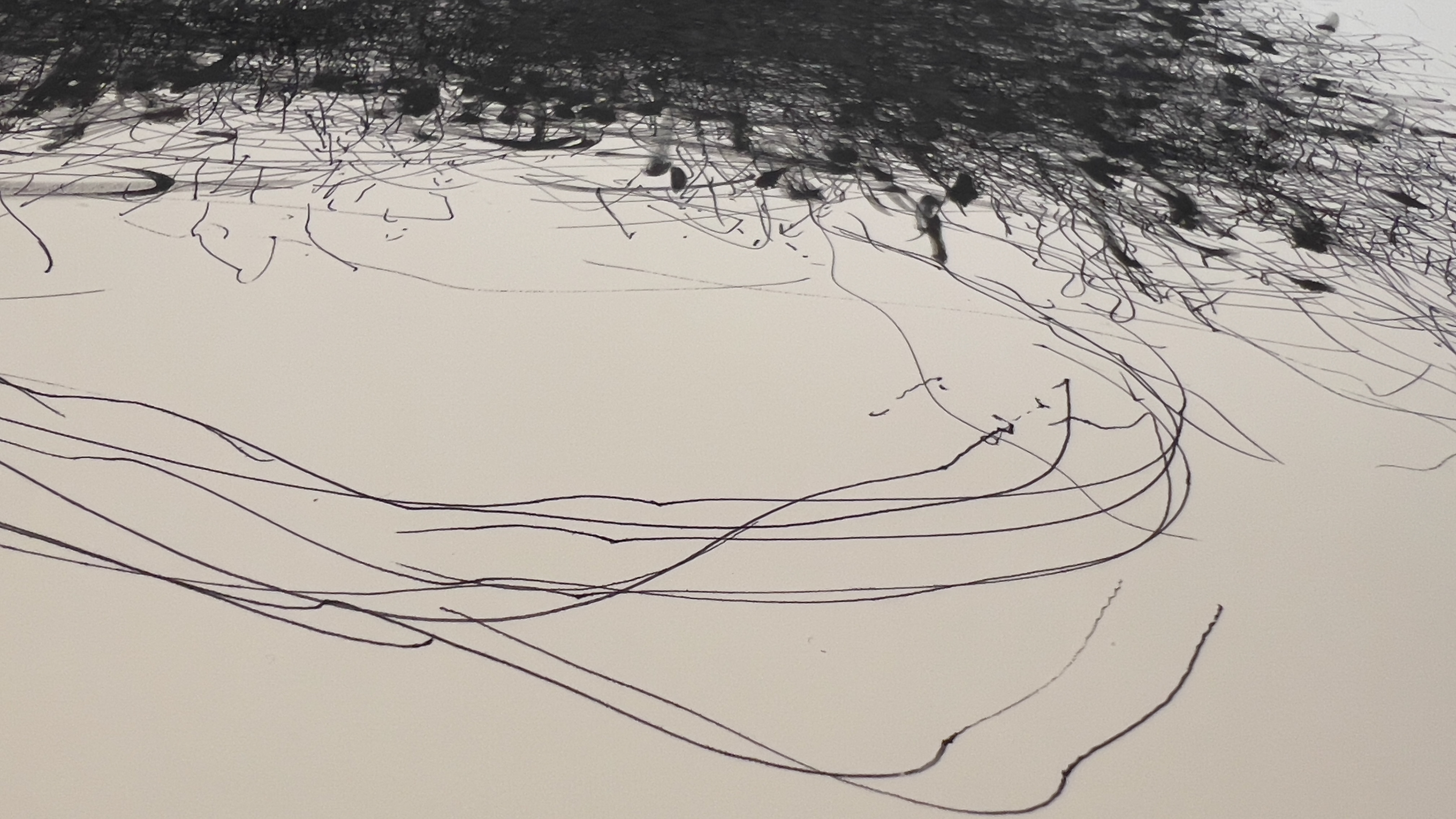
gestural drawing (detail) by Sonya Rademeyer

hand-drawn musical compositions (detail) by Franco Prinsloo
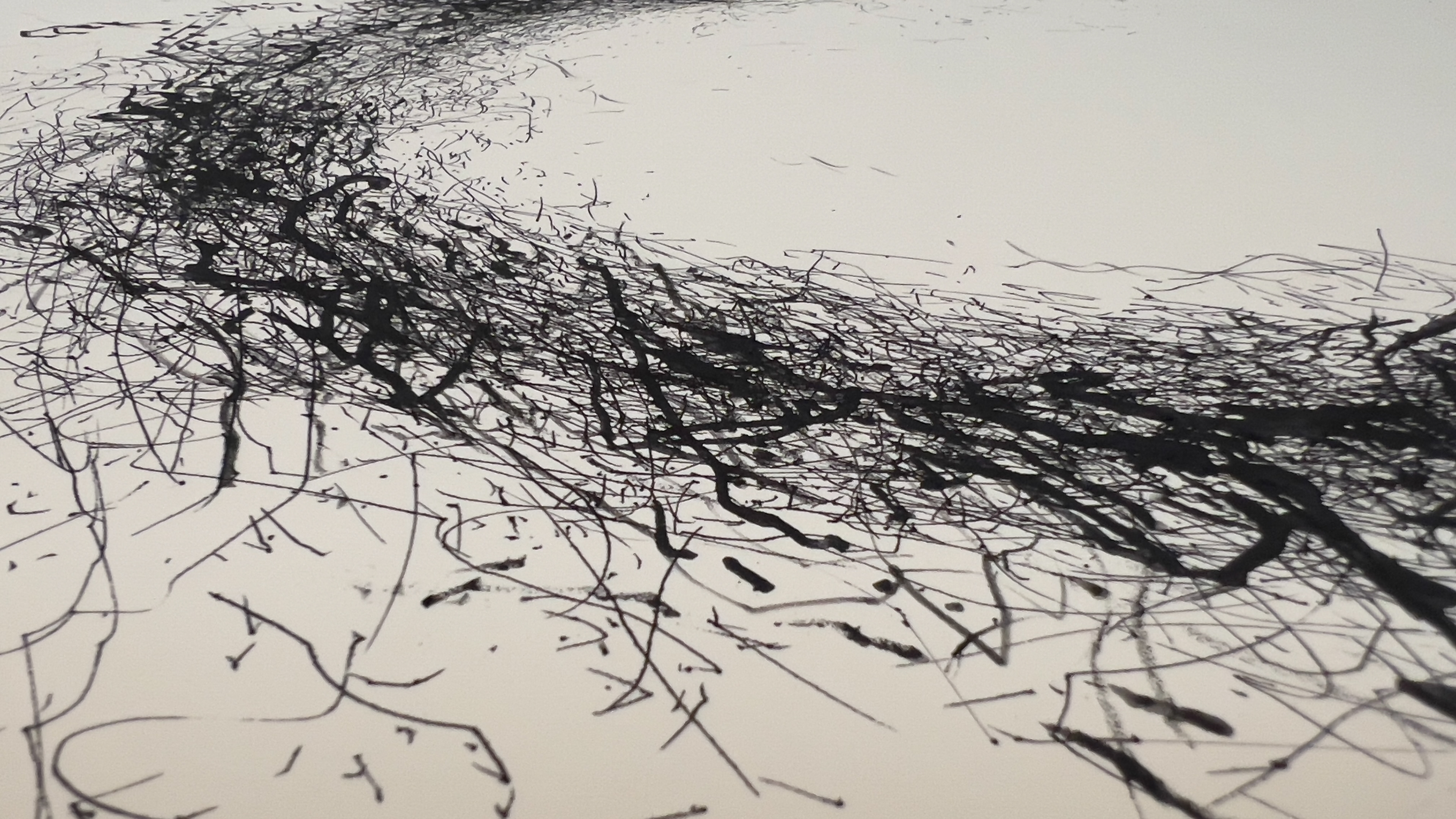
gestural drawing (detail) by Sonya Rademeyer
Space Entangled
Caroline Sohie
medium: Unique Giclée Print on Watercolour Paper with hand drawing
size: 880 mm(W) x 1680 mm(H)
Drawing is used by Caroline Sohie to engage with complexity, tracing tangible and intangible relations, between elements and territories in space and time. It is used as a medium for exploration and reflection, creating a depth of field assumed through a subjective point of view.
Inspired by chronophotography, Space Entangled starts with tracing still-motion pictures extracted from the video recorded by the artist’s first exploration of the AVA Gallery space. The spatial attributes are expanded, extrapolated and deconstructed into a series of rhythms and entangled elements in perpetual motion.
Overlaying layers of meaning, lines and surfaces fold; foreground turns into background, voids and solids are broken and reformed again into a new fragmentary order. In between the debris are spaces that are unseen. In this invisible space, the drawing mediates a new world of observation, ideas, interrogation and possibility.
This collapsed world is released from its inherent structural order and constraints, unravelling a new spectacle. The objects, volumes, lines and surfaces act in a performative environment, unleashing new realities and the potential of renewal in a speculative space.Space Entangled
Constellation
Caroline Sohie
medium: wood, hanging sculpture (2023)
size: 5000 mm(L) x 2500 mm(W) x 1000 mm(H)
The sculpture reflects on the act of connecting through the medium of space; on how the human body relates to its setting, and the tension and calibration that comes when being connected to others.
Caroline Sohie undertook a discovery process through enacted movement and collective performance. The sculptural installation is an intuitive spatial reflection on the fluid relational dynamics, produced by ‘seeing through the body’ through movement.
The transposition from an embodied knowing to a visual and architectural language, affirms a universal human connection, that transcends the physical body and focuses on the ‘in-between’ that connects us all.
The projection of the video work ‘What shall I Weep’ by Sonya Rademeyer and Franco Prinsloo through the sculpture reinforces this notion. As is the case of celestial constellations, which exist in the form of scattered individual stars, the imagery is refracted in space. The audience is invited to explore connections between disparate reflections and reassemble the work into an imaginary figure, informed by their own visual lens.
Constellation
Disposition
Caroline Sohie
medium: Giclée Prints on Watercolour Paper (2023)
size: 290 mm(W) x 377 mm(H)
Disposition I & II - edition of 3 / Disposition III, IV & V - edition of 5
"Disposition" by Caroline Sohie intends to capture the moment of becoming, a threshold in time when contextual conditions change. The focus is not on the representation of an arrested scene, but on the tension between coming and moving towards. The forces informing the spatial constellation are activated to perform.
The works convey a sense of motion. They mark a condition of readiness; an energy that doesn’t consist in the ordinary state of an object but in the propensity to change under the spell of reconfigured conditions. The active form holds time and agency. Disposition suggests the possibility, if not the inevitability, of change.
Photographic assemblage echoes the fracturing of the gaze.
It renders a speculative space that is yet unseen, suggests something else to unfold, in unlocking a space of possibility. Photography is used as a medium to reflect on a process of transition, articulating the unknown and in some sense, unknowable futures.

Disposition I
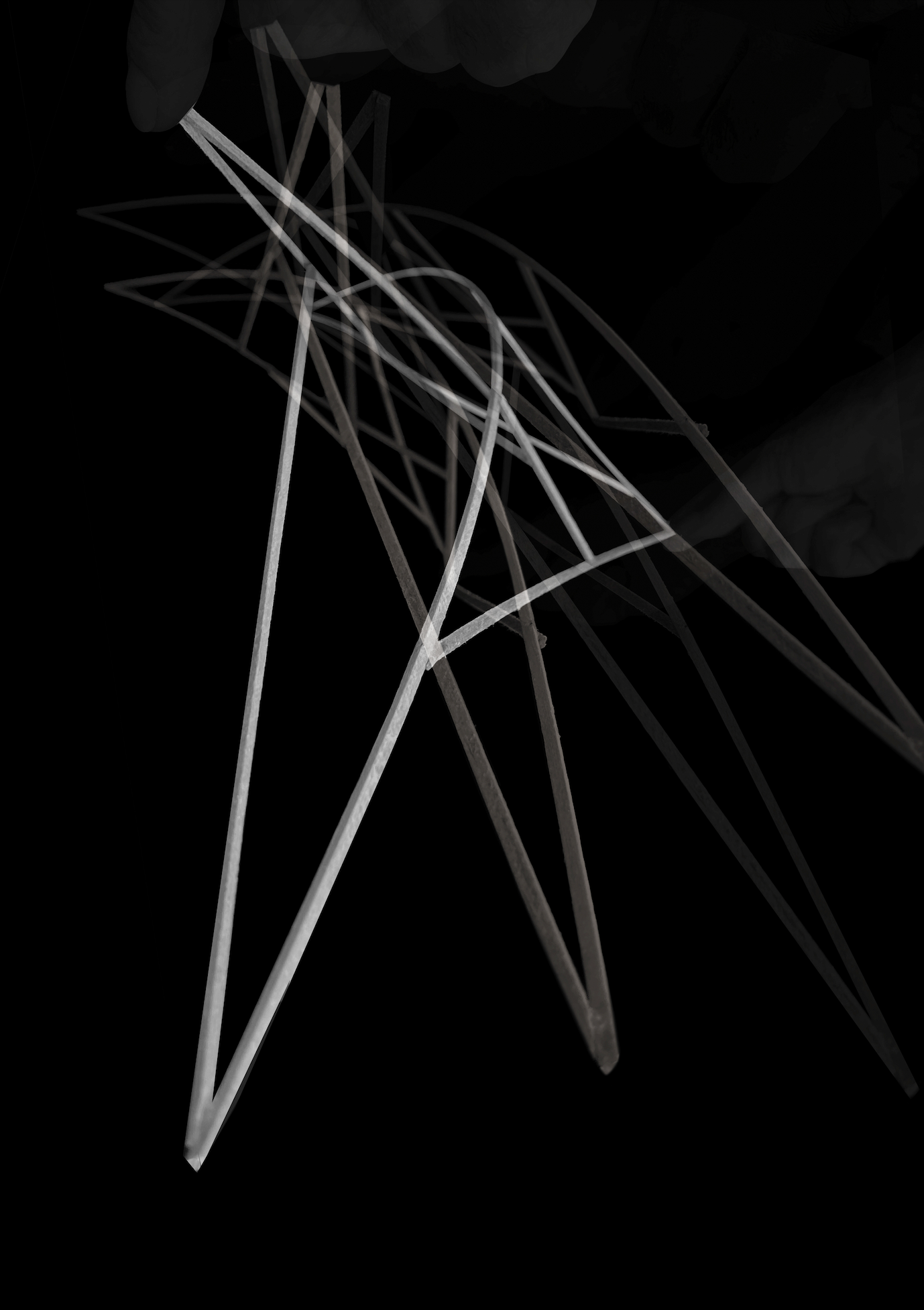
Disposition II
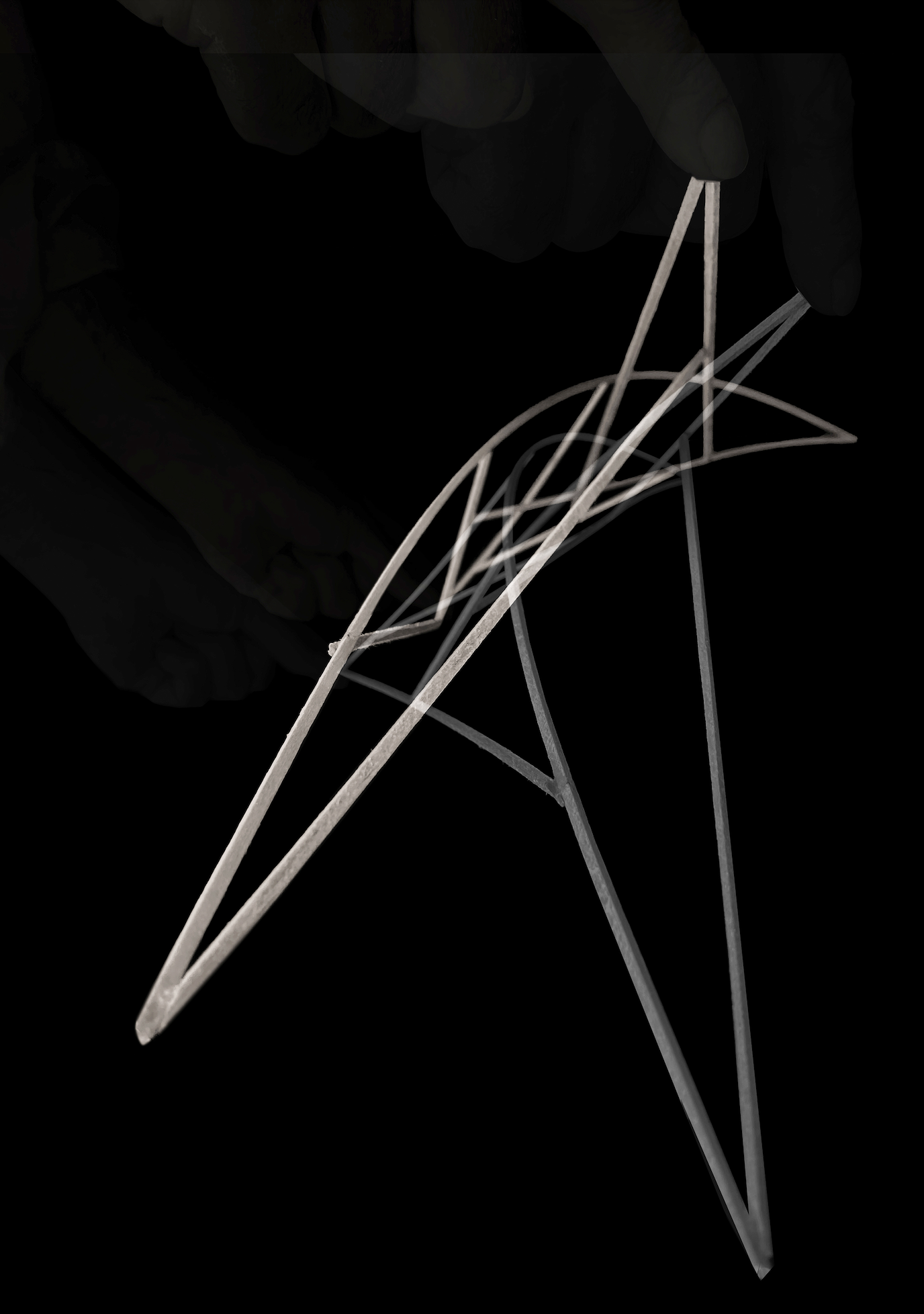
Disposition III

Disposition IV

Disposition V
please forgive me
Sonya Rademeyer and Franco Prinsloo
medium: video 9min 36 sec (2020)
video: Niki Vanos / video editing: Oscar O’Ryan.
"please forgive me" is a collaboration between and visual artist Sonya Rademeyer and composer Franco Prinsloo, in collaboration with the VOX Chamber Choir/performed by Liesemari de Wet, Marelize Hattingh and Elissa Lessing.
Using the specific geographical landscape of the remote Tankwa Karoo, the work is placed within the social history of early colonisation with land dispossession from First Nations Peoples, namely the hunter-gatherer San (Bushmen) and the pastoral Khoekhoe. It is an emotionally laden work, with a plea for forgiveness pertaining to issues of colonisation and land, from the position of white settler ancestry.
Through the medium of performance, Rademeyer re-enacts the role of the Oryx becoming entangled and dying a slow and painful death. She attempts to create an understanding that vulnerability is required in order to make sense of violent history. And, in facing and unpacking her/our own contributions to violence, we might be able to open an inquiry into empathy, and ultimately forgiveness.
"please forgive me" (2020) asks: if we could open discussions around forgiveness about a brutal past, can it create social change today?
Keeper of the Memory I-VII
Garth Erasmus and Sonya Rademeyer
mediums: drawings on canvas board / video 3min 6 sec (2020)
size: 500mm(w) x 50mm(h) each
"Keeper of the Memory I-VII" and "Memory Keeper" is a collaboration between visual artist / musician Garth Erasmus and visual artist Sonya Rademeyer.
The initial connection in creating this collaborative work, was seven circular drawings titled "Keeper of the Memory I -VII". The musical composition created by Garth Erasmus were created in response to the seven circular drawings, sparking a one-minute intuitive free-improvisation play in response to each drawing. We worked with the suggestion: to “ask questions instead of making choices”.
The 3min 6 sec video piece "Memory Keeper" (2020) specifically examines the intersecting lines (musical or drawn) as knots of Time and Place, whilst speaking to Cultural Memory. Viewed metaphorically, knotted memories can be found in the presence of a large Blue Gum tree. From the size of the tree, the inference can be made that she has stood as a memory Keeper when land was forcibly removed from First Nations in the Botriver area.
"Keeper of the Memory I-VII" and "Memory Keeper" asks: First Nation peoples of Southern Africa suffered greatly because of early Colonisation and slavery: how does land-restoration translate today?
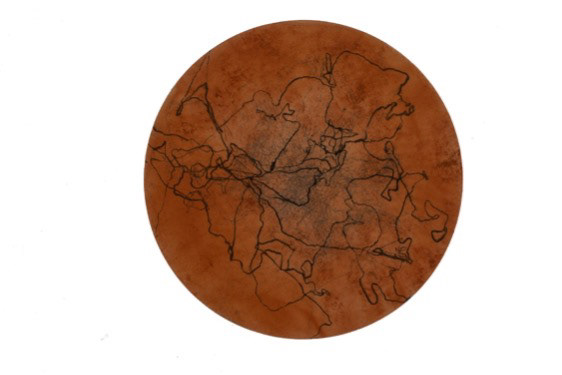
Keeper of the memory I

Keeper of the memory II

Keeper of the memory III

Keeper of the memory IV

Keeper of the memory V

Keeper of the memory VI

Keeper of the memory VII 50 mm(w) x 50 mm(h)
Prayer to the Young Moon [drawing]
Sonya Rademeyer
mediums: graphite drawing on Fabriano paper 300gms
size [framed]: 1800mm(w) x 1415mm(h)
"Prayer to the Young Moon" is a drawing performance by Sonya Rademeyer, created in response to a musical composition of the same name, by composer Franco Prinsloo.
The drawn imagery reflects a position of innate embodiment. Through deep-listening, the artist re-translates the composition by way of her body, and outputs these sounds through automated gesture in a very primal way through the direct use of her hands.
The drawing surface consists of two distinct halves which her body continuously interprets as such. And, although visually divided, the work is eventually re-conjoined into one piece visually, here in this exhibition.
This drawing reflects an inner plea for forgiveness for the trauma caused by colonisation and slavery.
Prayer to a the Young Moon
Prayer to the Young Moon [video]
Franco Prinsloo and Sonya Rademeyer
medium: video 3min 6 sec (2020)
"Prayer to the Young Moon" is a collaborative experience between a composer and a visual artist.
The musical composition is a setting of the poem by !nanni which was recorded in the famous Lloyd and Bleek notebooks, re-interpreted and re-imagined across artistic disciplines.
!nanni unknowingly becomes an important informer to this work, with poet Diana Ferrus narrating !nanni ‘s poem at the start of the video. The performative drawing is also influenced by !nanni ability to draw imagery sourced from his innate memory with regards to the local fauna and flora and folklore of the !kun, and asking where to find food.
Franco Prinsloo’s musical composition is performed by Vox Chamber Choir. In the live performance, this was performed by Franco Prinsloo (piano) and Merna Gubuza (voice).
The video speaks to the healing power of the creative arts in reconciling what has been broken.
"Prayer to the Young Moon" asks: if colonial history could be reversed, what might this world look like?
OM
Sonya Rademeyer and Franco Prinsloo
medium: video 8min 26 sec (2020)
"OM" is a collaborative experience between a visual artist and a composer. The work was commissioned by NaTi in 2020.
The video "OM" images the singular and powerful projection of a young black woman as performer (the artist’s daughter) conversing in her home language, Afrikaans. In the video piece, she painfully expresses her lived experience of marginalisation within the particularities of the Afrikaner culture, wherein she has been raised.
What does it mean to be raised within an all-white culture, where praise is constantly given to the language spoken, yet uttering of expectations to conform are constantly expressed?
The musical collaboration to the video is by South African composer, Franco Prinsloo, and performed by musicians Waldo Luc Alexander (viola) and Ronald Davy (cello). OM is a duet for viola and cello based on the poem Lotus, by Breyten Breytenbach. The music forms a meditative mantra in the style of a chaconne playing with short musical patterns mirroring each other. The composition mirrors the conceptual understanding of OM by interpreting the Buddhist sound vibration known as “OM” which is said to be able to cleanse away pride in order to cultivate kindness and empathy.
"OM" asks: can you see the pain that your white ignorance inflicts?
FUNDERS
with deep gratitude